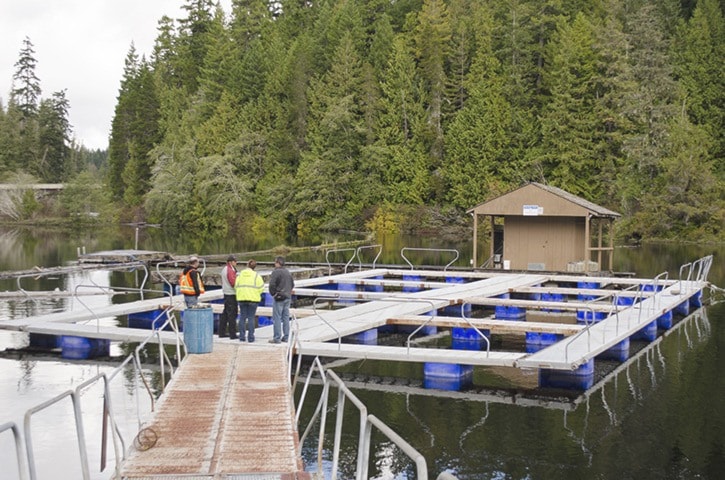MARBLE RIVER—The hot, dry country in Arizona is a world away from the lush riparian surrounds of the Marble River. So when Aimee Mundy and Robert Jordan paid a visit to the Marble River Hatchery last week, the Copper State residents were suitably impressed.
The pair didn’t arrive there by chance. Mundy and Jordan came to the facility on behalf of BHP Billiton to bestow a cheque for $25,000 upon the Friends of the Marble River Society for the operation of the hatchery.
As the company behind the Island Copper Mine, BHP Billiton already has a strong connection with the North Island. Since the mine’s closure in 1995, representatives have been involved in reclamation efforts and in other community involvement projects like last week’s donation.
The windfall is a huge boon to the hatchery, which is run entirely by volunteers.
Operating under the Department of Fisheries and Oceans Salmonid Enhancement Program’s Public Involvement Program, the hatchery was established in 1981 and today produces more than one million salmon each year, largely spring salmon.
Operating the hatchery is extremely energy-intensive, with society members estimating upwards of $15,000 annually in Hydro bills to maintain the facility.
The hatchery does receive some federal funding, but the cheque from BHP Billiton represents “quite a substantial sum,” said hatchery volunteer Lyle Flostrand. “It’ll keep us going, certainly for another year.”
Flostrand, along with Ken Fuller and Jon Flintoft, took the visitors on a tour of the facility to give an oversight on the operation and show exactly how important the donation was to its continued operation.
The visitors seemed particularly impressed with the otolith marking system in the incubation section.
Fuller explained to the visitors that by manipulating the temperature of the water, the hatchery could implant a unique marking in the otolith (ear) bones of the fish. He likened the marking system to tree rings and explained that the bones of the fish could then be used to identify it as having come from that hatchery. The group continued its behind-the-scenes look at the facility, local representatives underscoring how vital the contribution was to the hatchery’s.
Following the tour, the group assembled outside and the BHP Billiton duo officially made the cheque presentation to the Society representatives.
